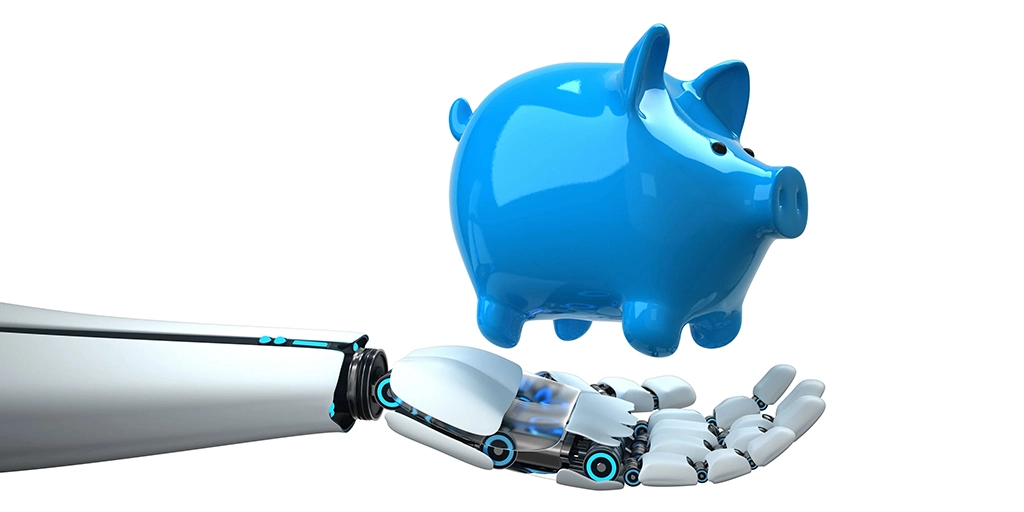3 min read
How much do industrial robots cost and when is the investment worthwhile?
 Markus Mayr
:
Mar 15, 2023 11:26:00 AM
Markus Mayr
:
Mar 15, 2023 11:26:00 AM

More and more companies want to automate their production. It is not only large corporations that see the need to make themselves fit for the future with industrial robots. The topic has also long since arrived in the SME sector.
For a long time, small and medium-sized companies in particular had to weigh up whether they could afford automation projects: financially and in terms of effort. Find out here how these hurdles can be avoided.
What prevents industrial robots from automated production?
19 percent of small and medium-sized enterprises (SMEs) in the manufacturing industry used industrial robots in 2021. The figure is rising only slowly; three years earlier, it was 16 percent. If all sectors are included, a sobering four percent of companies with up to 250 employees work with industrial robots. This hesitation is not due to a lack of willingness to embrace automation and digitization, as surveys of SMEs regularly show.
Rather, the complexity and high acquisition costs of robots, which have been common for a long time, represent too great a hurdle for SMEs. The industrial robot industry is thus faced with the challenge of radically simplifying operation and setup and making its products profitable sooner than before.
Are there robots that pay off faster?
The main advantage of technological progress is that robots no longer have to be a closed book, as is often the case with classic industrial robots. They also no longer represent an investment that will only pay off for a company after years (if at all).
A typical example of this are cobots, around which a real hype has arisen in recent times because they are significantly cheaper and more user-friendly than classic industrial robots. Whether the fuss about cobots is justified remains to be seen. Critical voices criticize their limited performance as soon as they are asked to perform their actual task and work together with humans without protection.
Companies that do not want to sacrifice any performance in automation, but still shy away from costs in the six-figure euro range, can fall back on the still young generation of digital robots. The fully automated digital robots achieve performance values that can keep pace with those of conventional industrial robots. In addition, they simplify automation through their user-friendly software and the integration of artificial intelligence. It often becomes apparent to medium-sized companies that this type of robot is the more suitable alternative to cobots for their specific application.
How much does a digital robot cost compared to classic industrial robots?
Especially since digital robots, like collaborative robots, are also significantly less expensive than conventional industrial robots. If we take the practical situation of regularly changing use cases as a basis, companies must reckon with almost four times higher life cycle costs for conventional industrial robots than for digital robots over a period of ten years.
In addition to the pure hardware - an industrial robot costs an average of 35,000 euros, depending of course on the requirements profile - and the peripherals (e.g. grippers, safety devices), other elements must be considered on the expenditure side.
Here are just a few examples:
-
Fees for software updates - included as a package with Digital Robots
-
Programming training for employees - less explanation required with Digital Robots plus online training concept
-
Initial setup and re-setup of the robot - Minimal effort required with digital robots
-
Service costs for support - included as a package with Digital Robots
-
Maintenance and troubleshooting - often possible independently with digital robots
Adding up all these cost factors, the life cycle costs of a classic industrial robot quickly amount to at least 300,000 euros over the course of ten years. A digital robot costs only around 80,000 euros during this time.
When is the switch to automated production worthwhile?
How can the lower life cycle costs be achieved? For example, by using less expensive drives than the shaft or cycloidal drives commonly used in robotics. In addition, some suppliers of digital robots offer their customers the option of flexibly selecting and adapting software solutions that are suitable for them.
The ease of operation and programming reduces training costs. Prices for spare parts are also kept low. Last but not least, access to the Industrial Internet of Things (IIoT) makes it possible for companies to track their programmed applications during operation and, if necessary, make adjustments.
The counter-argument that even a few tens of thousands of euros is a considerable sum for a medium-sized company cannot be dismissed. On the other hand, it is considerably less than the company has to spend on non-automated production. The Federal Statistical Office gives a gross monthly wage for industrial mechanics of around 3,500 euros. Even without salary adjustments, this would mean 420,000 euros per person after ten years.
As a reminder, a digital robot costs around 80,000 euros over this period, depending on the desired range and payload, including the software package and ongoing costs (e.g. for service, setup or access to an IIoT platform). Thus, the switch to automation pays for itself within one calendar year.
What do professionals gain from introducing a robot into their operation?
This does not mean that a robot should replace humans. Rather, it enables companies to find a way out of the shortage of skilled workers and/or to use their scarce, literally more valuable, employees for other, future-oriented and less physically demanding tasks.
Apart from the benefits for the staff, the companies themselves also have an added value from initial automation projects. SMEs will also lose out - probably in just a few years - if they consistently resist automation. With digital robots, SMEs can present themselves as future-proof, attractive employers even without the gigantic project budgets of global corporations - and prove to the international competition that they will continue to be a force to be reckoned with in the future.